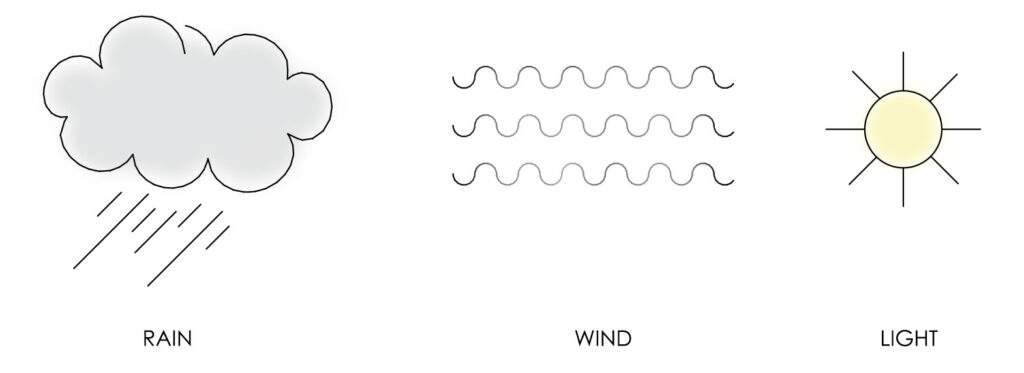The building envelope is the ‘skin’ of a building. It consists of the walls, windows, roof and floors that make up a building and separate internal spaces from external conditions.
Why is the Building Envelope important?
The main purpose of a dwelling is to is to provide shelter to its occupants from external environmental conditions. Environmental conditions are rain, wind, heat, light, and noise.

The building envelope is important for sustainable, passive design. The efficiency of a building envelope can govern a household’s energy use and therefore the overall lifecycle costs of a building. [1] The building envelope also ensures the health and well-being of the dwelling’s occupants.

Passive Design
A building envelope is dependent on a dwelling’s orientation to the sun, weather-tightness and materiality. Passive design utilises solar gain, thermal insulation, natural ventilation and noise control.
Alternatively, many older New Zealand homes have not been designed to suit our temperate climate. Homes are too hot in summer and too cold in winter. An example of this is the classic Victorian villa. Villas were built with walls, roofs and floors that lack insulation. This creates ‘gaps’ in the building envelope – allowing air/heat to pass through internal/external separators.
An insufficient home can result in the use of active heating and cooling. Active heating / cooling includes: fireplaces, electric/gas heaters and fans. Ideally, a well designed home does not require active heating/cooling. Thus, saving its occupants money while having a lesser impact on the environment.
Improving your home’s building envelope
The simplest way to improve your building’s efficacy is to install insulation. Insulation can be installed between joists in a timber floor, within studs in walls and amongst rafters in the roof. Opening your building up to sunlight can also improve its building envelope. Introducing solar gain to dark spaces with windows and solar tubes can create warmer lighter rooms.
Making changes to an existing building envelope
Changes to an existing building envelope may require a building consent. Examples of changes to the building envelope include:
- Additions to an existing house
- Alterations to the weather-tightness of a home, windows, roofing and cladding
The council require building consent to ensure any work done to an existing dwelling complies with the building code. Dixon Wild Architects can help with this!
References
[1] http://www.aucklanddesignmanual.co.nz/sites-and-buildings/mixed-use/guidance/thebuilding/buildingperformance/buildingenvelope







